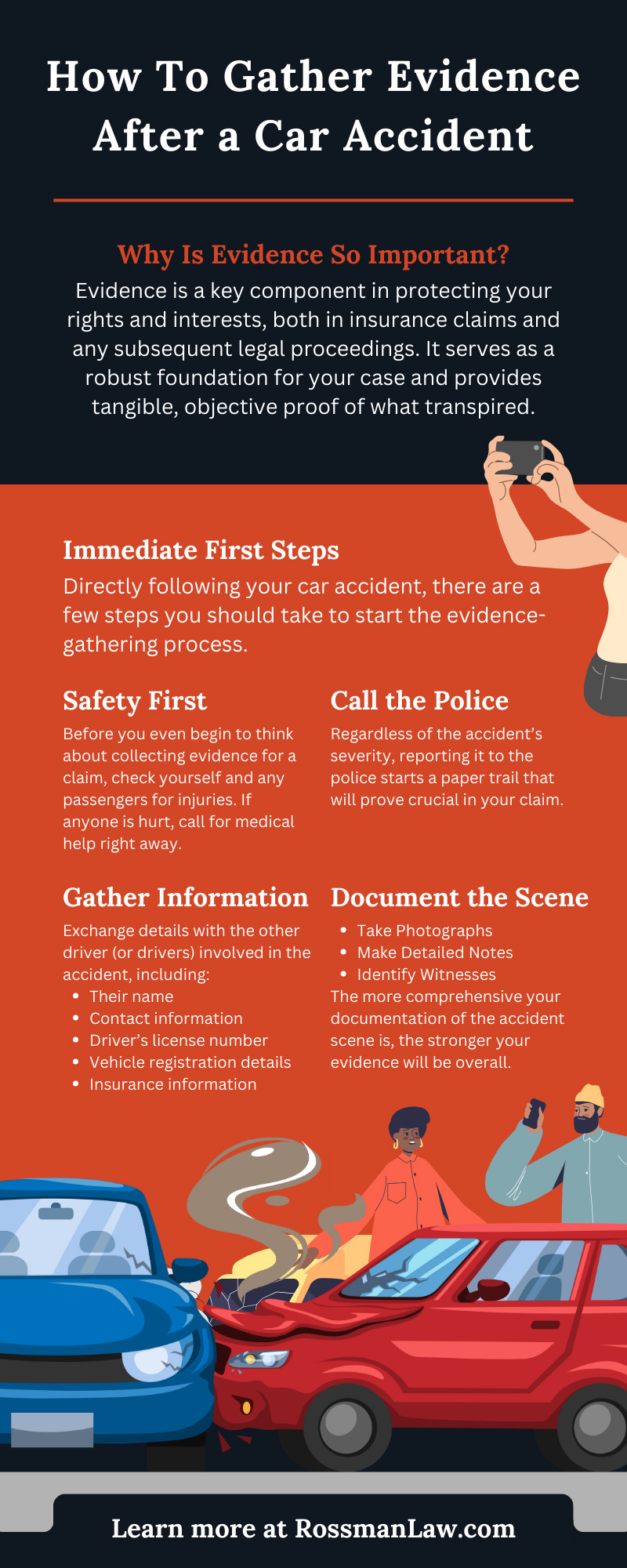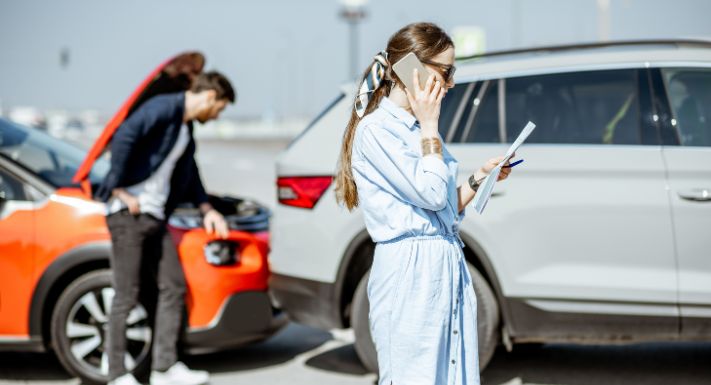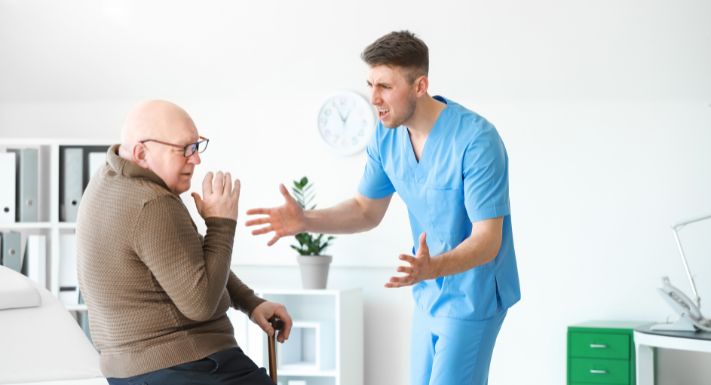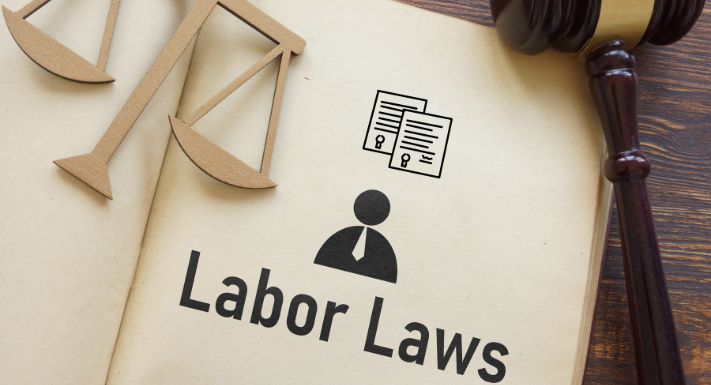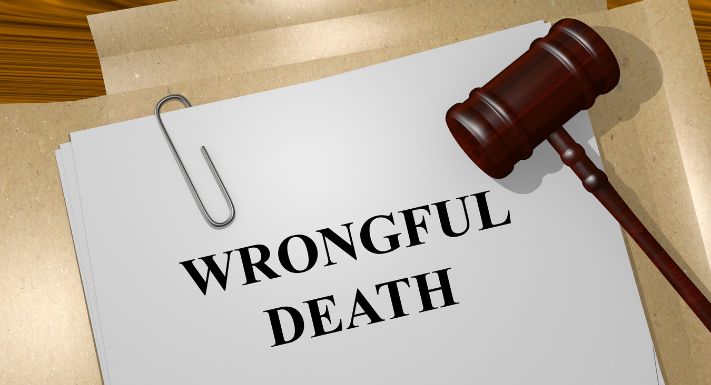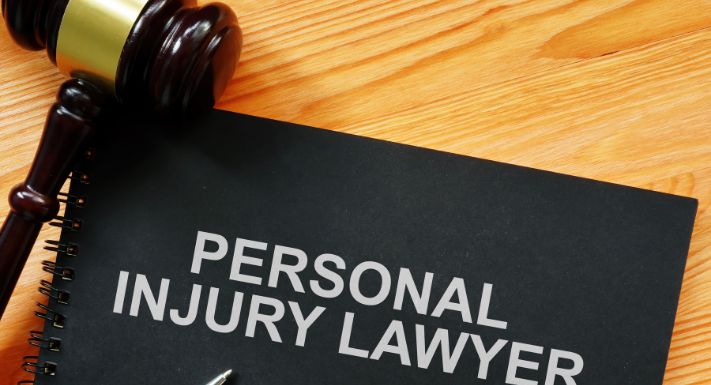
Why Experience Matters When Hiring a Personal Injury Lawyer
December 4, 2023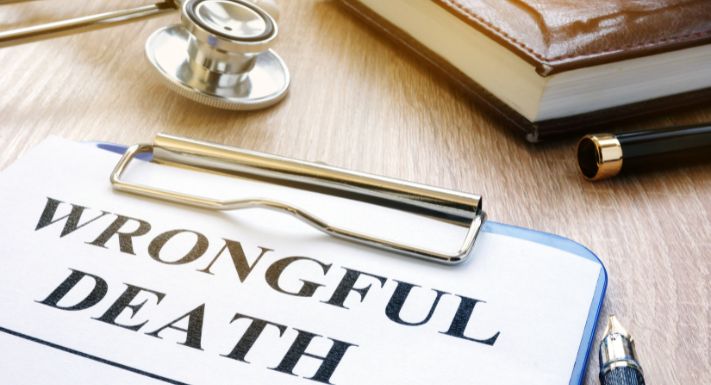
Is There a Statute of Limitations on Wrongful Death?
December 20, 2023Experiencing a car accident can leave you feeling disoriented. This sudden and unexpected trauma can disrupt the calm rhythm of your day and present a myriad of challenges to navigate. For one, you need to gather evidence as soon as possible after the car accident to bolster any future claims. How do you go about this process, though?
This guide from Rossman Law Group will walk you through each step of the process, from the immediate moments after the crash to potential legal proceedings. We understand that a car crash is a stressful event, and we’re here to provide clear and concise steps to help you navigate the aftermath with confidence.
Why Is Evidence So Important?
Evidence is a key component in protecting your rights and interests, both in insurance claims and any subsequent legal proceedings. It serves as a robust foundation for your case and provides tangible, objective proof of what transpired. The evidence you gather can be invaluable in corroborating your account of the incident and influencing the outcome of your claim.
Insurance Claims
After your accident, you’ll be in constant communication with insurance companies, and the evidence you collect can substantiate the extent of the damage. Insurers often rely on this evidence to determine the validity of your claim and the amount they will cover. For instance,
- Photographs of your damaged vehicle provide a clear picture of the collision’s severity
- Medical reports can validate your injury claims and demonstrate the crash’s physical toll
Legal Proceedings
As you and your catastrophic injury attorney establish the facts of your case, the evidence can demonstrate who was at fault, thus determining liability for the accident. Evidence to support your claim can include:
- Witness testimonies that provide an independent confirmation of your account
- Police reports that offer an unbiased assessment of the accident scene
Plus, the more evidence you have on your side, the more able you’ll be to convince a judge and/or jury of your position.
Immediate First Steps
Directly following your car accident, there are a few steps you should take to start the evidence-gathering process.
Safety First
Before you even begin to think about collecting evidence for a claim, check yourself and any passengers for injuries. If anyone is hurt, call for medical help right away. Even if no visible injuries are present, everyone involved should see a doctor, as some injuries take a while to reveal themselves.
Once you’ve ensured everyone’s safety, move off the road to a safer location. If the vehicles involved in the accident are obstructing traffic, move them to the side of the road if you can. However, if you can’t move them or if someone has serious injuries, leave them where they are until help arrives.
Call the Police
Regardless of the accident’s severity, reporting it to the police starts a paper trail that will prove crucial in your claim. A police report provides an official record of the incident and a neutral third-party perspective that can be invaluable in dealing with insurance companies and courtroom proceedings. When you speak to the police, give a factual account of the events as you remember them and avoid speculation or assumptions.
Gather Information
Exchange details with the other driver (or drivers) involved in the accident, including:
- Their name
- Contact information
- Driver’s license number
- Vehicle registration details
- Insurance information
Their accounts can provide additional perspectives on the incident, which can be of use if there are disputes about what happened.
Documenting the Scene
Now is the time to collect evidence to examine later.
Take Photographs
As soon as it’s safe to do so, take out your phone and capture plenty of photos of the accident scene. These images can provide a visual record of the aftermath and highlight details you might forget in the heat of the moment.
Photograph the overall scene, the positions of the vehicles, any visible damage to the vehicles, and any injuries sustained. You can also benefit from taking pictures of the road conditions, traffic signs, and any other environmental conditions that could have influenced the accident. A well-documented photographic record is strong evidence that provides a clear and objective depiction of the circumstances surrounding the accident.
Make Detailed Notes
While the events are fresh in your mind, jot down everything you remember about the accident. Include details such as:
- The time and location of the accident
- Weather and lighting conditions
- The direction you were traveling
- Any actions you took before the accident occurred
Also, note any immediate reactions or feelings you had; these may be relevant in an insurance claim or lawsuit. Your notes can help you recall specific details later on when you might have to recount the event.
Identify Witnesses
Did anybody not involved in the accident watch it unfold? Their testimony can be instrumental in supporting your case. Witnesses can provide an independent account of the accident, potentially corroborating your version of events.
If there are people present who saw the accident, approach them calmly and ask if they would be willing to provide a statement. Be sure to collect their contact information, as you may need their testimony at a later date in an insurance claim or even a courtroom.
Remember
The more comprehensive your documentation of the accident scene is, the stronger your evidence will be overall. By noting and photographing every detail of the scene, you can enhance your ability to present a compelling account of the incident.
The Bottom Line
The process of gathering evidence after a car accident requires thoughtful attention and immediate action. Remember, though, that each accident is unique—your approach to evidence collection must adapt to changing circumstances.
Consider, too, what you’ll do with the evidence once you’ve collected it. Using the services of a legal expert from Rossman Law Group can help you substantiate your claims, whether in insurance settlement negotiations or in court. A seasoned attorney understands the nuances of the law and can guide you on how to effectively present the evidence you’ve collected.
Gathering evidence after a car crash involves more than just taking pictures and jotting down notes. You’ll need a proactive and adaptable approach. Adopt these strategies to bolster your position and protect your best interests in the aftermath of the accident.
